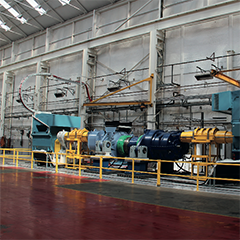During October 2015 Moventas Gears, the wind turbine gearbox specialist headquartered in Finland, made an investment decision, which now supports customers all around the UK and central Europe. The 3.6MW Full Load Test Bench & Final Assembly workshop was commissioned in Huddersfield, in August 2016. Supported by the UK government, the Huddersfield upgrade was part of a Regional Growth Fund initiative.
All gearboxes serviced at Moventas go through a proven test run process regardless off the gear type or size. This is a Moventas internal and essential quality standard and usually also a customer requirement. Refurbished gearboxes that have gone through partial load or spin test can also have the option to be full load tested; if there has been major component change or modifications in the design, the full load test is a must. Moventas has a range of test benches dedicated to the serial production and service workshop requirements covering kW and MW drive trains.
The difference between full load test and partial load or spin test
The main purpose for the traditional full load test run is to guarantee successful component manufacturing, refurbishment and assembly process. The test run itself is not to improve quality – it is a quality assurance process.
A commonly used procedure for full or partial load test is two gearboxes mounted back to back and applied with nominal turbine load. With the spin test the basic principal of testing is to mount the gearbox and spin it with a motor coupling to the high-speed pinion.
During full load test the new or refurbished gearing will “wear in’’, generating micro particles into the oil. This is a normal feature. Regardless of the testing method used, a customised fine filtering system is used to meet the required oil cleanliness. The ’’Wear in’’ feature will not occur during the partial load or spin test so it is essential to have offline filtering installed to the gear when taking it into the operation.



























